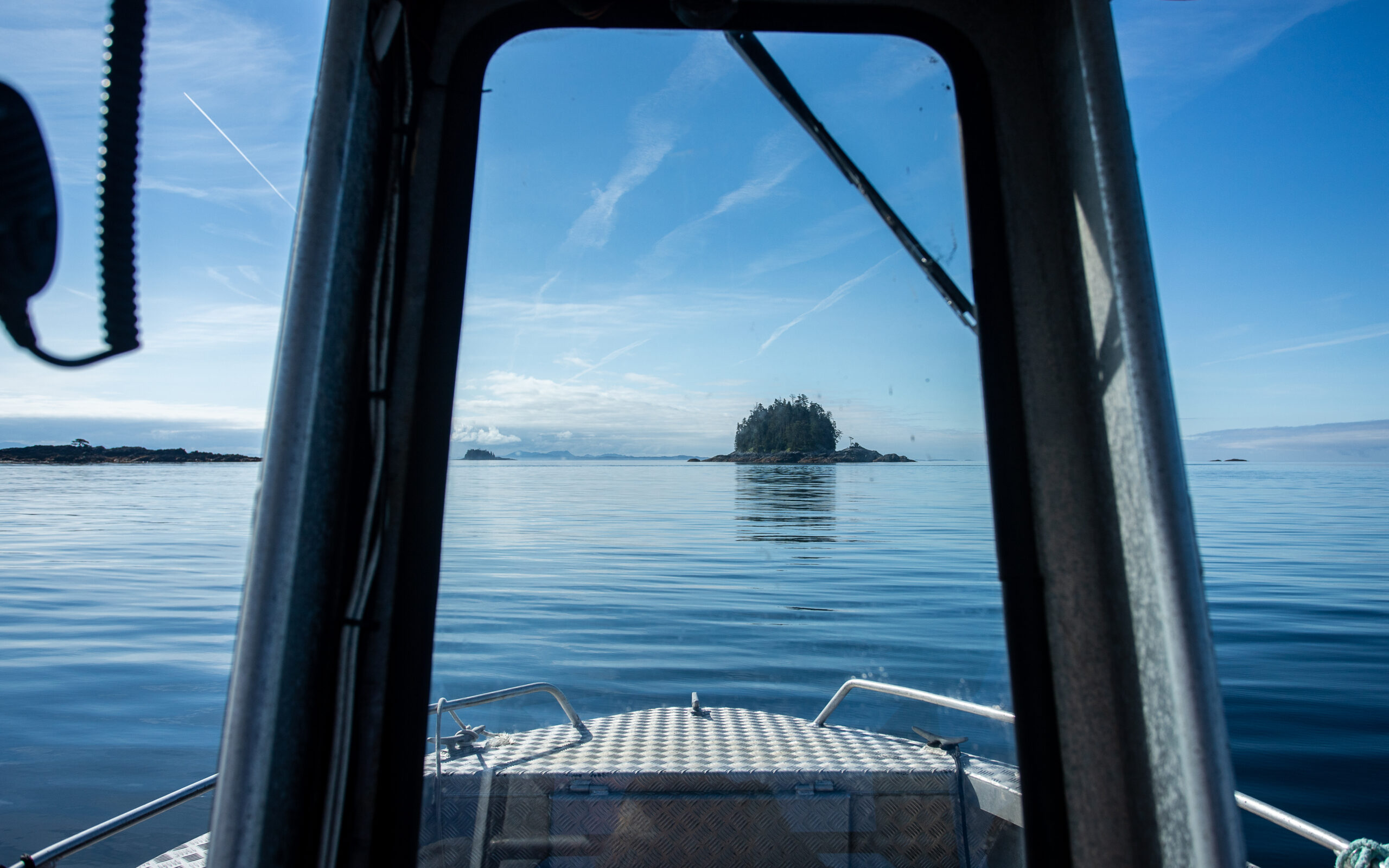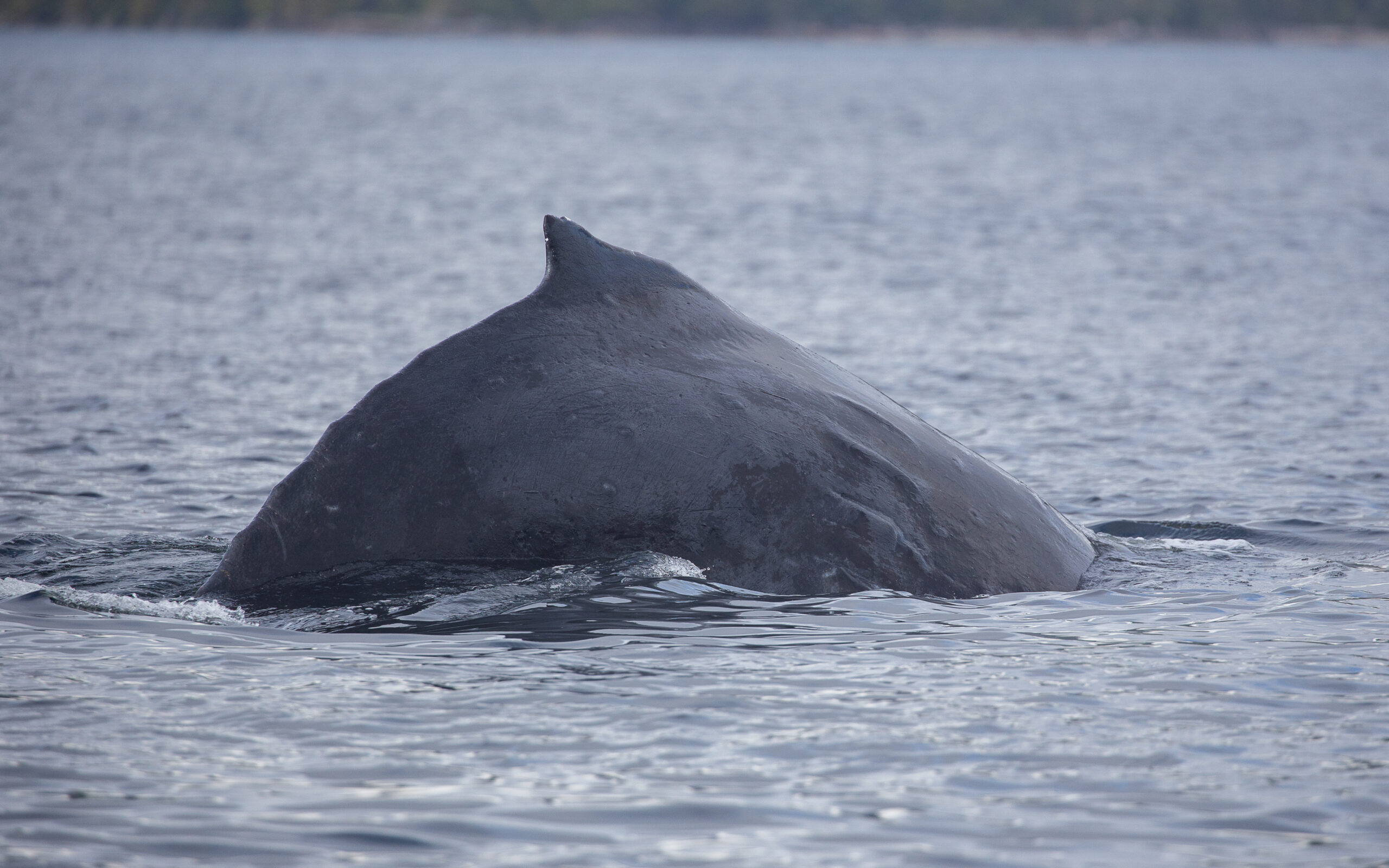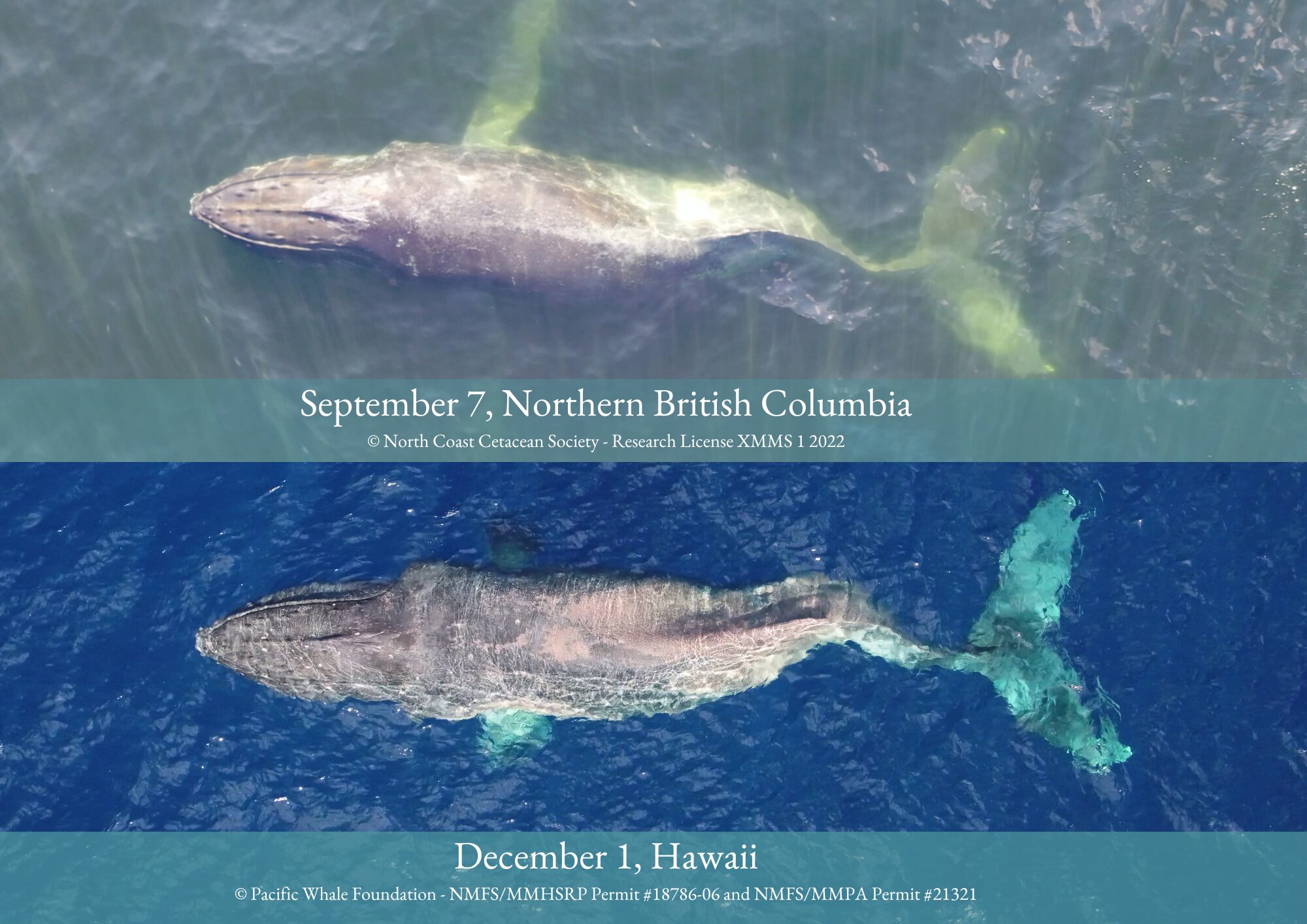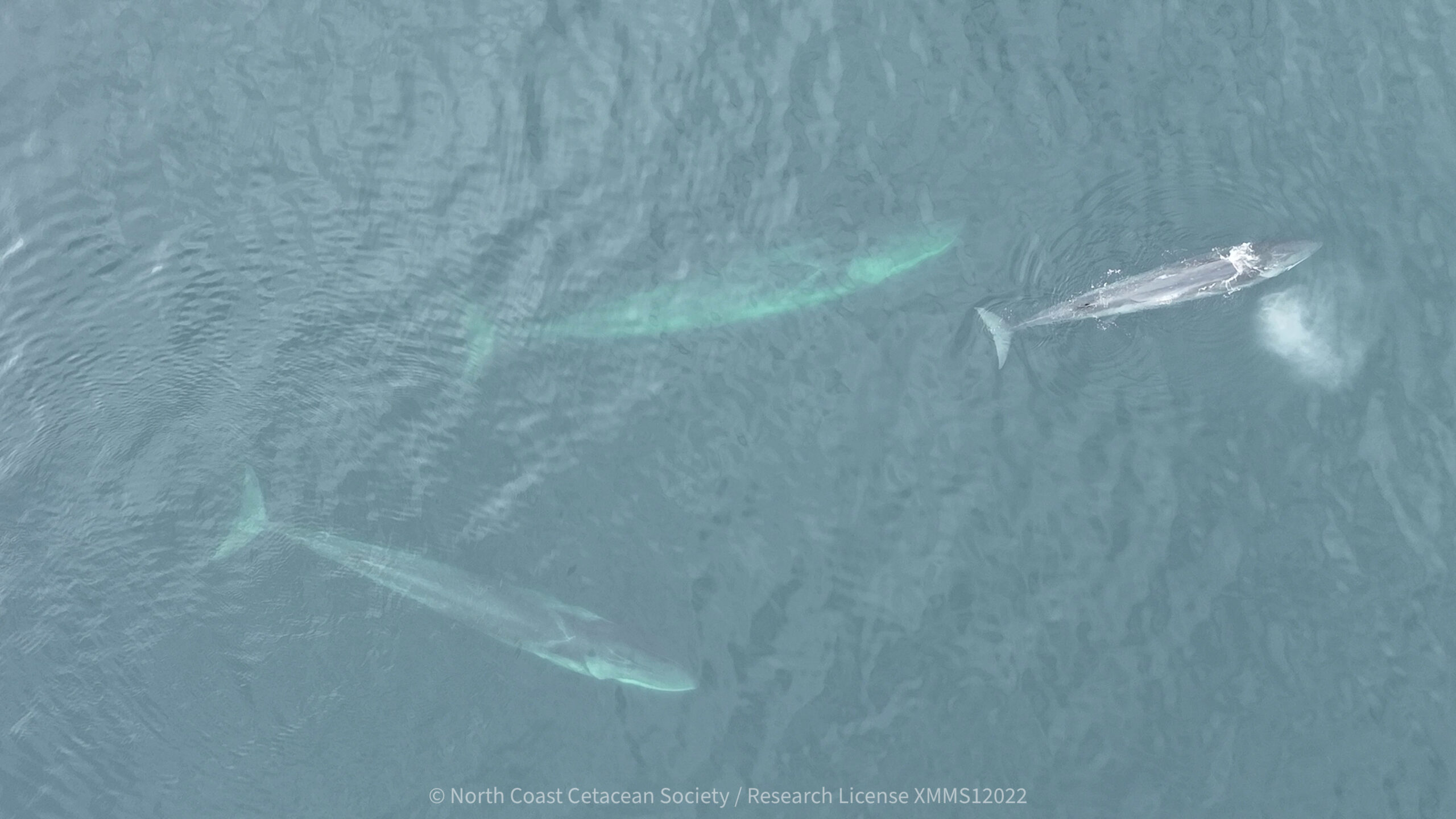For What’s to Come
As I drift in the waters ebb, I wait for my heart to slowly come back to my chest from where it sits in my stomach. Just meters ahead, water is gently lapping against the body of a floating humpback whale who is sound asleep in the center of Lewis Passage.
Mere moments ago, I was travelling at speed in our research vessel the Elemiah over a glassy calm sea with a keen eye looking out for any sign of whale presence. Ahead I saw the slightest ripple in the water, but I could not distinguish its source. In my gut I recognised that something was off. There was nothing visible above the surface of the water, no log to be seen, no movement other than the windless ripples. Following instinct alone I pulled the throttle all the way back into neutral, my wake breaking behind me as the Elemiah all at once came down from her plane and stopped. Turning the key, I embraced the silence as the engine ceased its low rumble. For minutes I sat there, watching the rolling water 400 meters away, and waiting for any sign of movement. For 5 minutes there was nothing.

Research Vessel, the Elemiah, travelling through Gitga'at Territory. Photo © Grace Baer
Ever so slowly the source of the ripples became clear as the dorsal fin of a humpback whale sleeping just below the surface emerged, and this vulnerable whale took a shallow breath before sinking back down. I could not help but to have an emotional response.
All at once it sunk in that I had been so close to travelling on a collision course with the very creature I have dedicated myself to protect. Drifting in near perfect silence, in tandem with the invisible sleeping whale, another wave of recognition took hold as I remembered that we were drifting down the middle of a major shipping lane, and a proposed tanker highway.

Humpback whales Cross (BCY0189) and her calf resting at the surface. Photo © Grace Baer
Ship-strikes are currently one of the biggest threats to the recovery of whale populations globally. In the anticipation of liquefied natural gas tankers beginning to transit through some of the most productive and whale-dense waters of the BC coast, our team of scientists through the Ships, Whales, and Acoustics in Gitga’at Territory project (SWAG; a collaboration between the North Coast Cetacean Society, WWF-Canada, and the Gitga’at First Nation) that is based at the Fin Island research station undertook a major investigation into the current rates of mortality for humpback whales and fin whales from shipping in this region, and modelled how this is predicted to change following the addition of LNG tanker transits.

Humpback whale Sequence (CSX0240) surfacing and feeding alone the impending LNG tanker route, with scars from a previous small vessel strike. Photo © Grace Baer
The results were harrowing, even for our own scientists leading this investigation. Numbers were double checked, triple checked, and came back the same. By the year 2030, up to 2 fin whales and 18 humpback whales are predicted to be killed annually from being hit by large ships. These are populations of whales that are still in a recovery state following the end of commercial whaling in this region, and this level of mortality threatens to reverse this recovery and bring both species down into a state of decline.
Watching this whale continue to sleep peacefully at the surface and having these thoughts of what’s to come running through my mind, I realised that my emotional response truly stems from an understanding that large ships transiting through this area do not have the same manoeuvrability in course or speed in these narrow and whale-filled waterways. Nor do they necessarily have the same recognition that even a slight difference in surface water flow may indicate a whale is sleeping just below.
This reality has been demonstrated already these past two summers, and before any tankers have even begun their transits. In the span of only 1 month and together with the Gitga’at Guardians of Hartley Bay as well as neighbouring whale research stations and individual community members, we were involved in searches for 5 whales that were reported to be dead or injured following large vessel strikes.

Humpback whale Moon (BCX1232). Moon suffered a large vessel strike, causing her to become paralyzed from her dorsal fin to her tail. Moon migrated to Hawaii using only her pectoral flippers, and suffered incredible emaciation and whale lice infestation as a result. Moon has not been seen since. Top photo © North Coast Cetacean Society; bottom image © Pacific Whale Foundation
While our work to date has focused heavily on documenting whale-vessel interactions and providing science upon which policy makers can refer to make the best-informed decisions for shipping management and species protection, and while we continue our efforts to better classify whale vulnerability by considering their specific behaviours like surface resting, more is urgently needed.
To protect the whales that do not know a drastic change is about to occur in their feeding grounds, to protect their critical habitats and preserve the unique behaviours and cultural traditions that are just beginning to resurge on this coast, we must continue to push for slow down zones and promote a culture of open and timely communication between ships and teams like the Coastal Guardian Watchmen and whale research organisations to ensure that when these heart wrenching collisions occur, we can do right by the whales and respond immediately.

Fin whale mother, calf, and escort. Photo © Grace Baer
Once thing is certain in this time of change: we will be here. We will be stationed at the Fin Island Research Station, in line with the exact route the tankers will transit to document any and all collisions, and to be the voices for the whale’s to be sure that each whale’s story is not lost, but can be used to further protect their kin.
